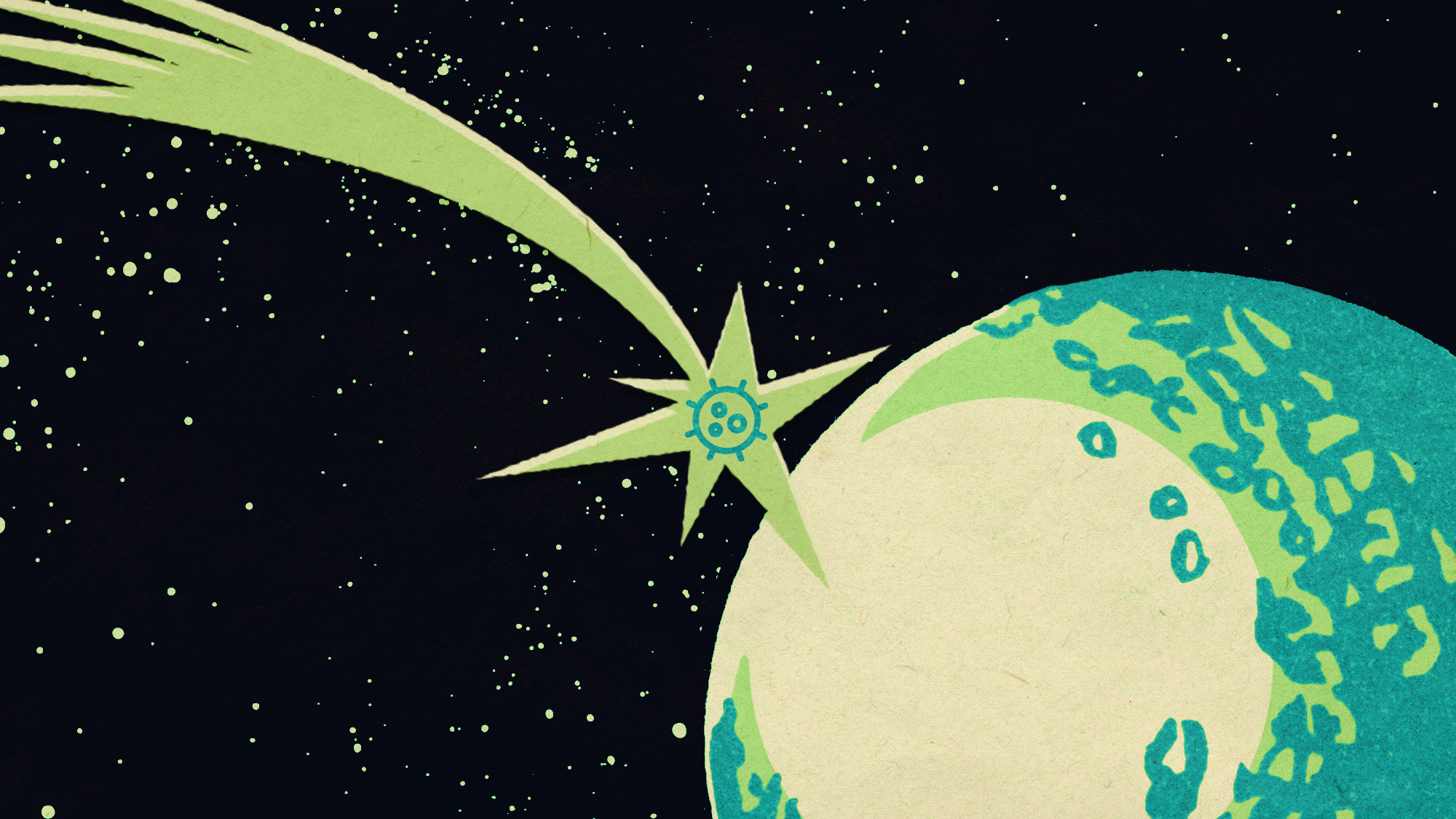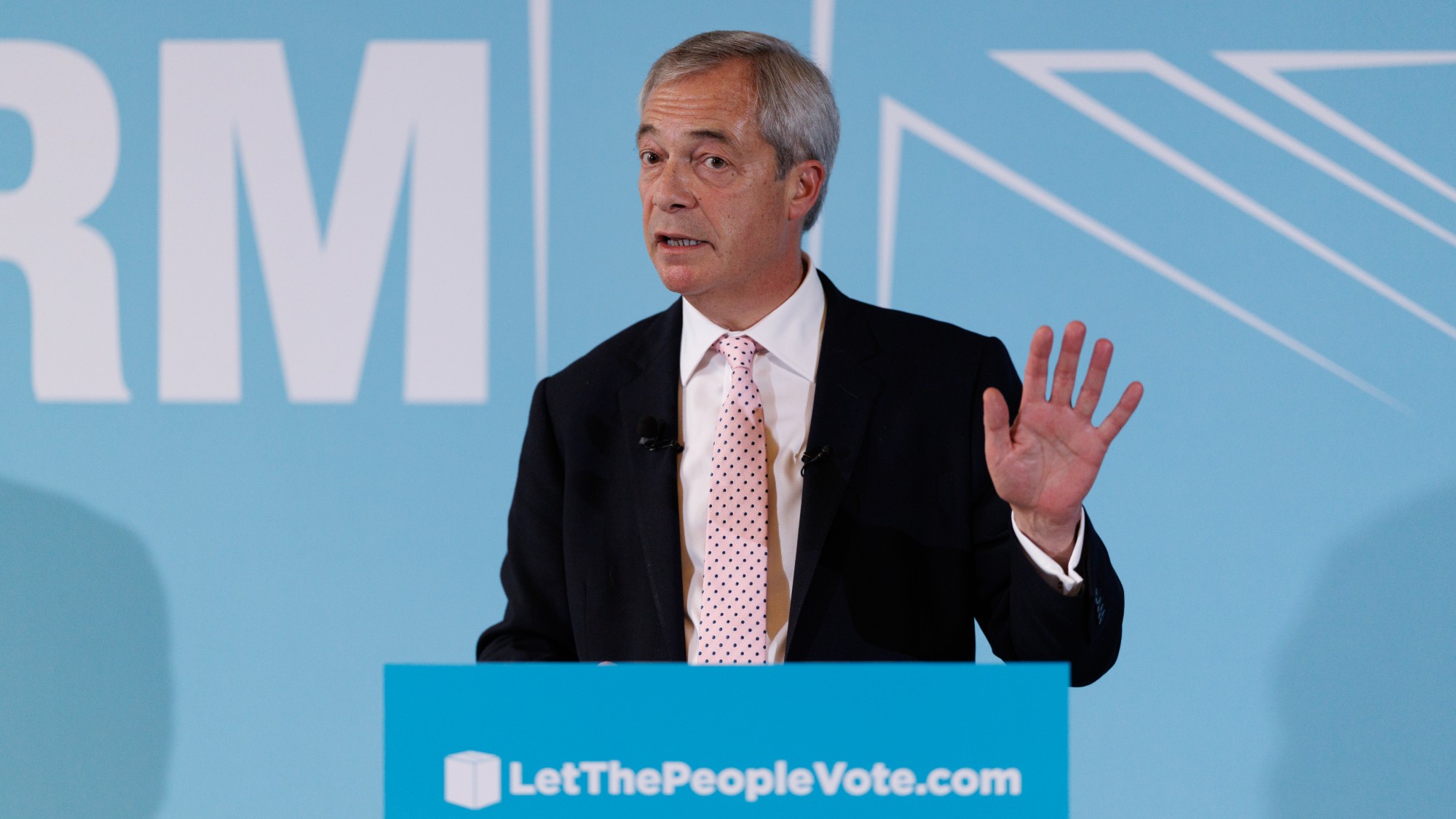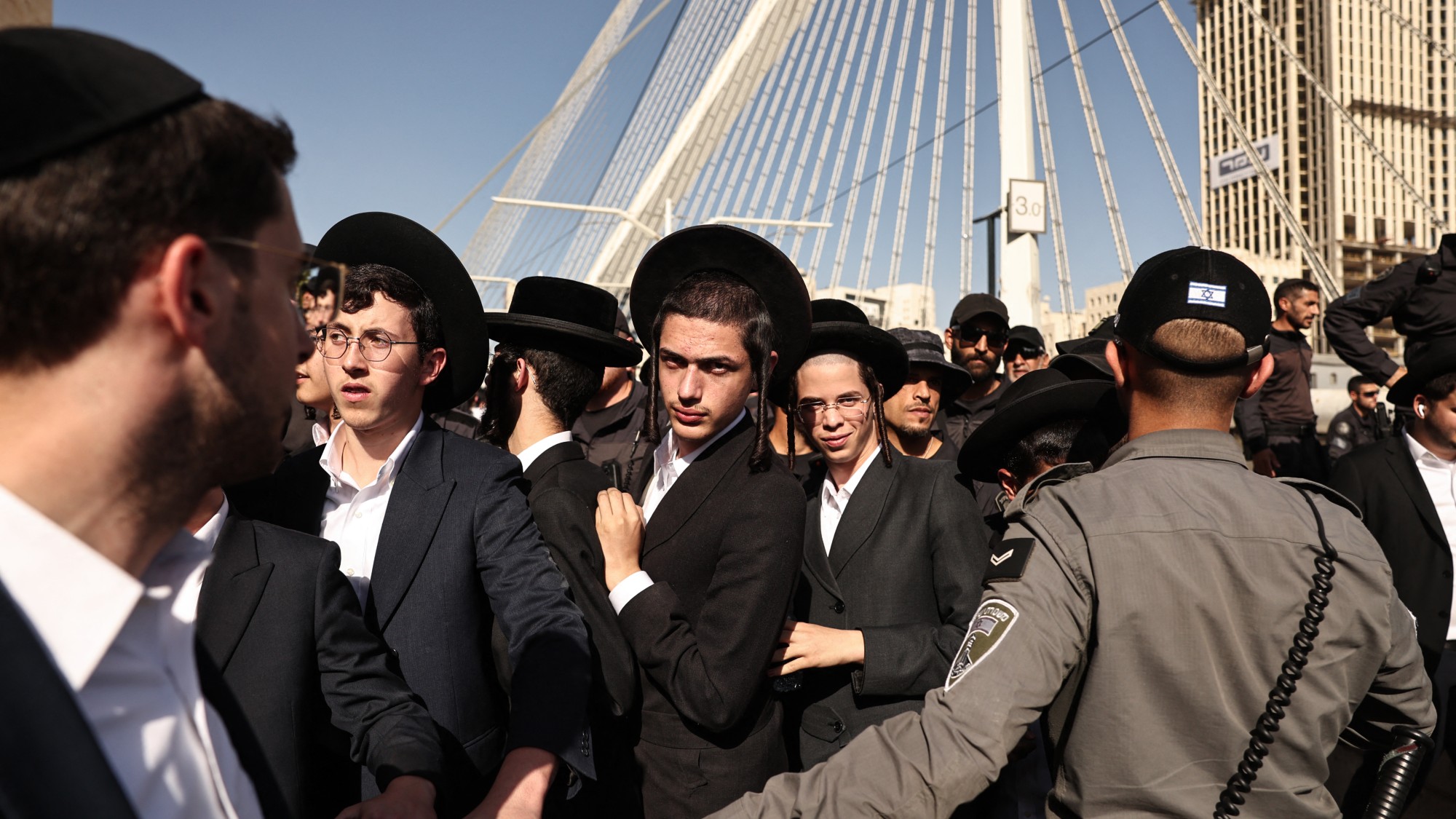A giant meteor did double duty on Earth billions of years ago
Destruction happened, yes. But nutrients from the impact also led to a 'fertilizer bomb.'


A meteorite that may have been up to 200 times bigger than the one that killed the dinosaurs might have triggered the formation of complex life on Earth. The S2 meteorite hit Earth approximately 3.26 billion years ago, bringing a one-two punch of destruction and proliferation. While life was limited prior to the impact, researchers believe that it may have bloomed in the aftermath because of nutrients released.
Rock and roll
The S2 meteorite "likely had significant effects on early life," said a study published in the journal Proceedings of the National Academy of Sciences. The effects included massive destruction along with stimulation of life on Earth. The meteorite "triggered a massive tsunami that would have churned the ocean floor with debris, flushing into coastal regions," Space.com said. S2 was between 23 and 36 inches in diameter. "Picture yourself standing off the coast of Cape Cod, in a shelf of shallow water," said Nadja Drabon, an early Earth geologist and assistant professor in the Department of Earth and Planetary Sciences at Harvard University, who is the lead author of the study. "Then all of a sudden, you have a giant tsunami sweeping by and ripping up the sea floor."
S2 initiated several life-giving processes. "The impact released essential nutrients, such as phosphorus, on a global scale," Drabon said to CNN. Heat from the impact boiled off the topmost layer of the ocean while also heating the atmosphere. "Overall, this is very good news for the evolution of early life on Earth, as impacts would have been much more frequent during the early stages of life's evolution than they are today." While scientists posit that life did exist prior to this point, "no complex life had formed yet, and only single-celled life was present in the form of bacteria and archaea."
The Week
Escape your echo chamber. Get the facts behind the news, plus analysis from multiple perspectives.

Sign up for The Week's Free Newsletters
From our morning news briefing to a weekly Good News Newsletter, get the best of The Week delivered directly to your inbox.
From our morning news briefing to a weekly Good News Newsletter, get the best of The Week delivered directly to your inbox.
With the aftermath of S2 came "sharp spikes in populations of unicellular organisms that feed off the elements phosphorus and iron," which were "likely stirred up from the deep ocean into shallow waters," said Harvard University. Because of this iron metabolization, bacteria flourished. "This shift toward iron-favoring bacteria, however short-lived, is a key puzzle piece depicting early life on Earth."
Meteor mayhem
Scientists have long theorized that a meteor may have brought life to Earth. "Early in Earth's history, space rocks frequently hit the young planet. It is estimated that 'giant impactors,' greater than 6.2 miles (10 kilometers) across, pummeled the planet at least every 15 million years," said CNN. "We have long known that on the young Earth, meteorite impacts were both more frequent and, on average, larger than today," Andrew Knoll, a Harvard geologist and study co-author, said to NBC News. "While people have speculated about the potential biological and environmental consequences of ancient impacts, there has been little hard data to test varying hypotheses."
One such theory was that the building blocks for life on Earth may have come from space. An April 2024 study explored whether carbon, carbon monoxide and ammonia, all important for life, "could combine there to create peptides, or small chains of amino acids, essential to life on Earth," said Astronomy. "If so, these peptides could have been delivered to Earth after its formation to aid in the development of early life," mainly from asteroids and meteors.
A free daily email with the biggest news stories of the day – and the best features from TheWeek.com
Devika Rao has worked as a staff writer at The Week since 2022, covering science, the environment, climate and business. She previously worked as a policy associate for a nonprofit organization advocating for environmental action from a business perspective.
-
 Political cartoons for December 13
Political cartoons for December 13Cartoons Saturday's political cartoons include saving healthcare, the affordability crisis, and more
-
 Farage’s £9m windfall: will it smooth his path to power?
Farage’s £9m windfall: will it smooth his path to power?In Depth The record donation has come amidst rumours of collaboration with the Conservatives and allegations of racism in Farage's school days
-
 The issue dividing Israel: ultra-Orthodox draft dodgers
The issue dividing Israel: ultra-Orthodox draft dodgersIn the Spotlight A new bill has solidified the community’s ‘draft evasion’ stance, with this issue becoming the country’s ‘greatest internal security threat’
-
 Blue Origin launches Mars probes in NASA debut
Blue Origin launches Mars probes in NASA debutSpeed Read The New Glenn rocket is carrying small twin spacecraft toward Mars as part of NASA’s Escapade mission
-
 ‘The Big Crunch’: why science is divided over the future of the universe
‘The Big Crunch’: why science is divided over the future of the universeThe Explainer New study upends the prevailing theory about dark matter and says it is weakening
-
 Dinosaurs were thriving before asteroid, study finds
Dinosaurs were thriving before asteroid, study findsSpeed Read The dinosaurs would not have gone extinct if not for the asteroid
-
 The moon is rusting
The moon is rustingUnder the radar The Earth is likely to blame
-
 Panspermia: the theory that life was sent to Earth by aliens
Panspermia: the theory that life was sent to Earth by aliensUnder The Radar New findings have resurfaced an old, controversial idea
-
 Africa could become the next frontier for space programs
Africa could become the next frontier for space programsThe Explainer China and the US are both working on space applications for Africa
-
 NASA reveals ‘clearest sign of life’ on Mars yet
NASA reveals ‘clearest sign of life’ on Mars yetSpeed Read The evidence came in the form of a rock sample collected on the planet
-
 Canyons under the Antarctic have deep impacts
Canyons under the Antarctic have deep impactsUnder the radar Submarine canyons could be affecting the climate more than previously thought
